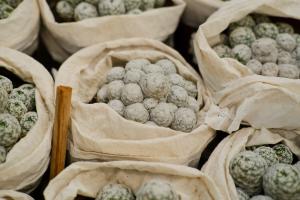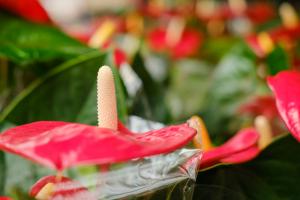How to Water a Large Indoor Plant
Watering a large indoor plant can be a daunting task. With so much space to cover and the risk of overwatering or underwatering, it's important to know the right steps to take. Follow these tips to keep your large indoor plant healthy and thriving:
Choose the Right Container
The first step in watering a large indoor plant is to choose the right container. The container should have drainage holes to allow excess water to escape, preventing the plant from drowning. In addition, the container should be large enough to accommodate the plant's root system, while still leaving room for growth. A container that is too small can limit the plant's growth and cause the roots to become cramped.
Determine the Right Watering Schedule
The next step in watering a large indoor plant is to determine the right watering schedule. The frequency of watering will depend on the plant species, container size, and the environment. Overwatering can lead to root rot and other issues, while underwatering can cause the plant to wilt and die. As a general rule, watering once every 7-10 days is a good starting point, but it's important to monitor the plant's behavior and adjust the schedule as needed.
Water at the Right Time of Day
The time of day that you water your large indoor plant can also affect its health. Watering in the morning or early afternoon is ideal, as it allows time for the soil to dry before nighttime. Watering at night can lead to excess moisture in the soil, which can promote fungal growth and other problems.
Use the Right Amount of Water
When watering your large indoor plant, it's important to use the right amount of water. Generally, you should water the plant until water begins to drain out of the bottom of the container. This ensures that the root system receives enough water without drowning the plant. However, it's important to avoid letting the plant sit in standing water, as this can lead to root rot and other issues.
Monitor the Plant's Behavior
The final step in watering a large indoor plant is to monitor the plant's behavior. If the plant is showing signs of overwatering, such as yellowing leaves or a foul odor, reduce the frequency of watering. If the plant looks dry or wilting, increase the frequency of watering. In addition, pay attention to any other changes in the plant's behavior or appearance, as this can indicate other problems that may require attention.
By following these tips, you can keep your large indoor plant healthy, vibrant, and beautiful. Remember to choose the right container, determine the right watering schedule, water at the right time of day, use the right amount of water, and monitor the plant's behavior. With a little care and attention, you can enjoy the beauty and benefits of a large indoor plant for years to come.

 how many times do yo...
how many times do yo... how many planted tre...
how many planted tre... how many pine trees ...
how many pine trees ... how many pecan trees...
how many pecan trees... how many plants comp...
how many plants comp... how many plants can ...
how many plants can ... how many plants and ...
how many plants and ... how many pepper plan...
how many pepper plan...































